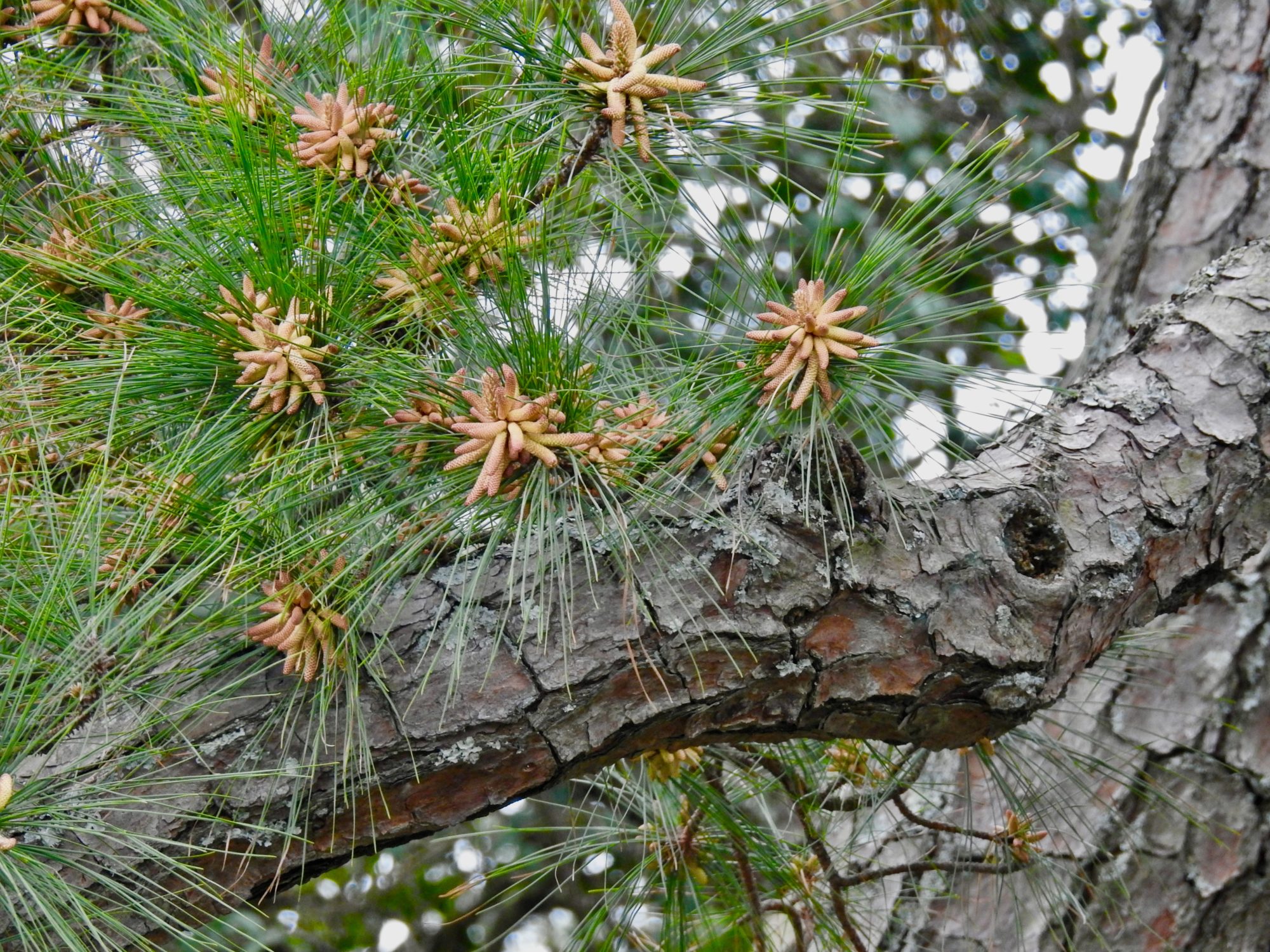
A neighbor asked me the other day why there were so many pine cones on her loblolly pine.
And I realized she was right. When you look up at a pine tree this time of year, the number of cones on the top of the branches really does seem excessive.
But what you are seeing is only a spring thing. It’s numerous male pine cones that are getting ready to “bloom” and release their pollen. The “flowering” cones are in clusters at the end of the pine branches and are very visible:

Female pinecones grow tucked down further on the branches, all the better to receive the falling pollen from the male “flowers”. So, in spring, there really are a lot of male cones front and center.
But soon after blooming, the male’s little reddish yellow curlicues fall to the ground and the male cones fade into the background. Then it’s the female cones’ time to shine as they go on to produce seeds within their cones.
Many female cones stay on the tree for a full year or more and don’t drop until the following fall.
It won’t be long before you will open your windows on a warm spring morning and find by the end of the day that you can write your name in yellow pollen on the dining room table.
As messy as pine pollen can be, not to worry. Not only does all the pollen mean there will be more little pine trees in this world, we also can take comfort in the fact that this coating of yellow pollen is not what causes spring allergies.
So, give pine pollen a break. The yellow stuff only heralds the coming of the real allergy culprits which is wind borne pollen released by other trees. Achoo!